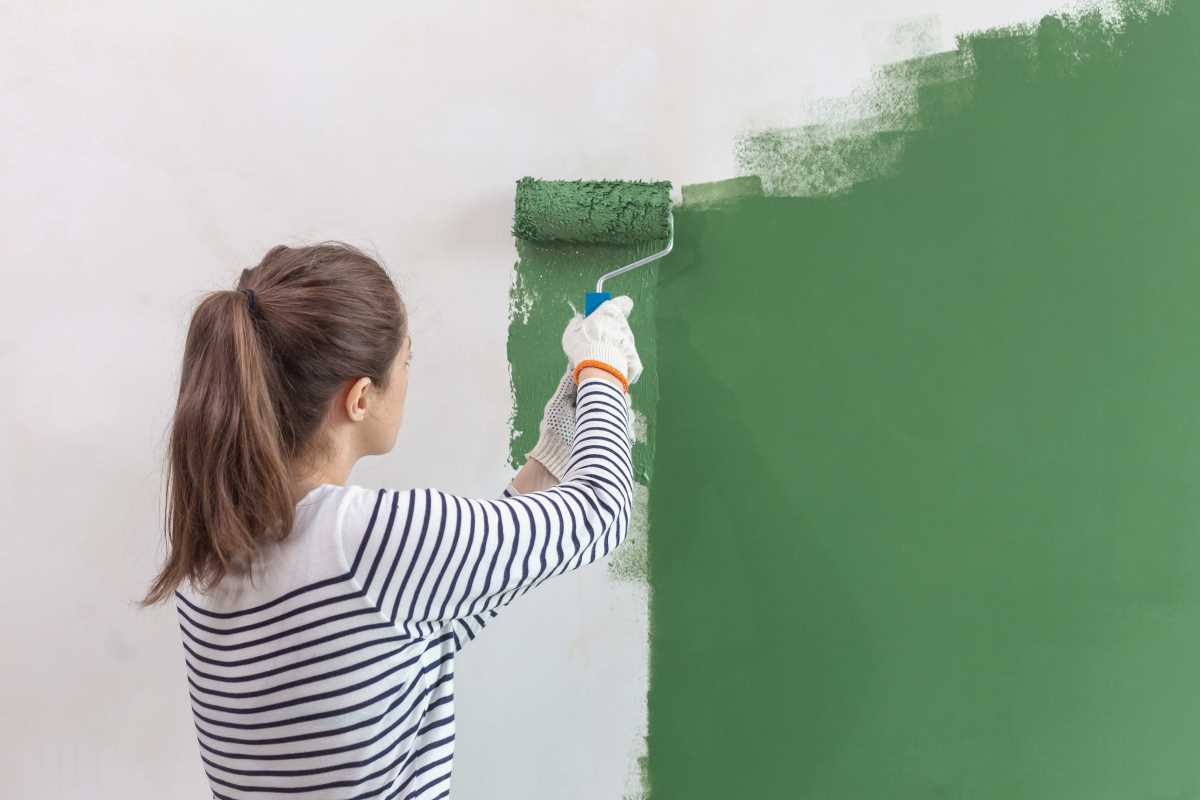A fresh coat of paint can completely transform a room, making it feel brighter, larger, and more inviting. While hiring a contractor might seem like the easy route, you’d be surprised how professional-looking results are within your reach—even if you’ve never picked up a paintbrush before! Plus, painting it yourself comes with perks like saving money and claiming bragging rights for your beautifully refreshed space.
If you’re ready to roll up your sleeves (literally) and tackle a DIY paint job, this step-by-step guide has everything you need to paint like a pro without breaking the bank.
Step 1: Choose Your Colors Wisely
Picking the perfect paint color is where the fun begins! Play around with swatches to find a color that complements your space and fits your vision.
Tips for Choosing Colors:
- Test Samples: Instead of guessing, grab a few sample pots and paint swatches on your wall. Lighting changes throughout the day, so check how the colors look in the morning, afternoon, and evening.
- Stick to Neutrals for Larger Spaces: Colors like whites, beiges, and grays create a timeless, versatile look. Save the bold colors for an accent wall or smaller rooms if you’re feeling adventurous.
- Understand Finishes: Flat finishes hide imperfections but are harder to clean, while satin or semi-gloss is great for high-traffic areas like kitchens or kids’ rooms.
Pro Tip: If you’re still unsure, apps like Sherwin-Williams’ ColorSnap can help visualize colors in your actual room.
Step 2: Gather Your Supplies
The right tools are essential for a flawless finish. You don’t need to splurge on contractor-grade equipment, but do invest in quality basics that will make the job easier.
DIY Painting Must-Haves:
- Paint Rollers: Choose a roller with the right nap (thickness) for your walls. Smooth surfaces like drywall need a short nap (1/4 to 3/8 inch), while textured walls need a thicker one (1/2 inch or more).
- Angled Brush: Perfect for cutting in corners and edges.
- Painter’s Tape: Helps you create crisp, clean lines.
- Drop Cloths: Protect your floors and furniture from drips.
- Paint Tray: A good tray minimizes mess and makes rolling more efficient.
- Primer: Don’t skip this step if you’re covering a dark color or painting over new drywall.
- Plastic Wrapping or Zip Bags: To keep brushes and rollers from drying out if you need a break.
Pro Tip: Cheap tools can lead to streaky results, so buy decent-quality brushes and rollers for smoother, faster work.
Step 3: Prep Like a Pro
A flawless paint job starts with good prep work. It might feel like the “boring” part of painting, but trust us, it’ll make all the difference.
Prep Checklist:
- Clean the Walls: Wipe down surfaces to remove dust, dirt, and grease. A simple solution of water and mild soap works for most spaces.
- Fill in Holes or Cracks: Use spackle to fix imperfections, then sand the area smooth once it dries.
- Sand the Walls: Lightly sand glossy or uneven surfaces to help your paint adhere better.
- Apply Painter’s Tape: Tape off trim, ceilings, and fixtures you don’t want painted. Press firmly to ensure clean lines (and avoid paint bleeding underneath).
- Use Drop Cloths: Cover floors and furniture to catch drips and splatters.
Pro Tip: Remove outlet and switch covers for a cleaner, more professional finish. Label screws and covers in a baggie so you don’t lose them during cleanup.
Step 4: Start with a Basecoat
Priming your walls might feel like an extra step, but it ensures a smooth, even base for the paint to stick to. It can also reduce the number of paint coats you’ll need, especially if you’re covering dark or vibrant walls.
Tips for Priming:
- Use a tinted primer to match your paint color for better coverage.
- If you’re dealing with stains or watermarks, use stain-blocking primer to prevent them from showing through.
- Apply it with a roller for the large areas and use a brush for corners and edges.
Once the primer has dried completely (mind the instructions on the can), you’re ready to paint!
Step 5: Master Cutting-In and Rolling
This technique is the key to that professional finish. Cutting-in involves painting a straight edge along the trim, ceiling, and corners before using a roller for the large surfaces.
Cutting-In Tips:
- Use an angled brush for edges. Load your brush lightly to avoid drips.
- Start about half an inch from the trim or ceiling and slowly work your way closer for clean lines.
- Cut in small sections so your edges don’t dry before you roll over them.
Rolling Tips:
- Pour paint into your tray and roll your roller until it’s evenly coated (no drips!).
- Work in “W” or “M” shapes to distribute the paint evenly, then fill in the gaps with smooth, overlapping strokes.
- Move quickly but carefully. It’s better to do two thin coats than one thick, messy coat.
Pro Tip: Don’t overload your roller. Too much paint leads to uneven application and messy drips.
Step 6: Don’t Rush the Dry Time
Patience is key to a flawless finish. Allow each coat to dry fully before applying the next (check your paint can for recommended drying times).
Here’s a basic timeline to follow:
- Primer Drying Time: 1-4 hours, depending on the product
- First Coat of Paint: 2-4 hours to dry before applying the second coat
- After the Final Coat: Wait at least 24 hours before moving furniture back or hanging anything on the walls.
Don’t forget to step back and admire your work between coats–you’re already halfway there!
Step 7: Clean Up Like a Pro
Once the painting is done, proper cleanup helps you preserve your tools and enjoy your freshly painted space without lingering mess.
Cleanup Checklist:
- Remove painter’s tape while the paint is still slightly wet to prevent peeling.
- Wash brushes and rollers immediately (use water for latex-based paints and mineral spirits for oil-based paints).
- Seal leftover paint cans tightly and store them in a cool, dry place.
Bonus Tip: Wrap rollers or brushes tightly in plastic wrap or foil to keep them from drying out mid-project if you plan to use them again soon.
Painting like a pro doesn’t require years of experience or fancy equipment. With the right prep work, tools, and techniques, you can change any room in your home into a showroom-worthy space.
 (Image via
(Image via





